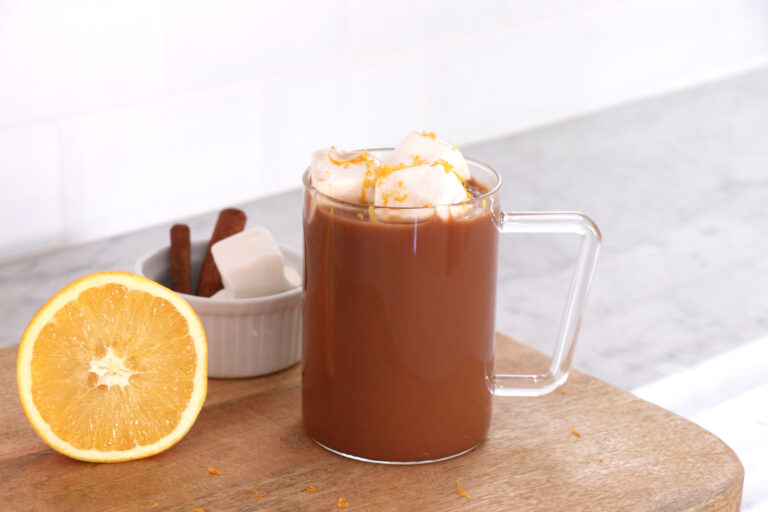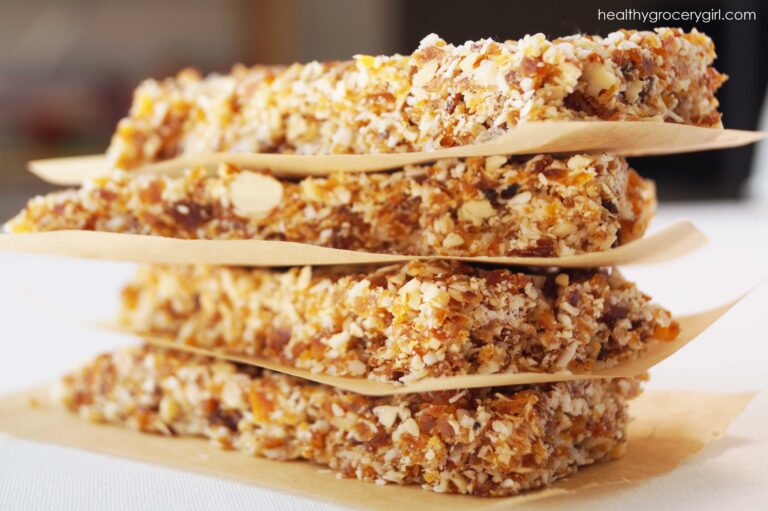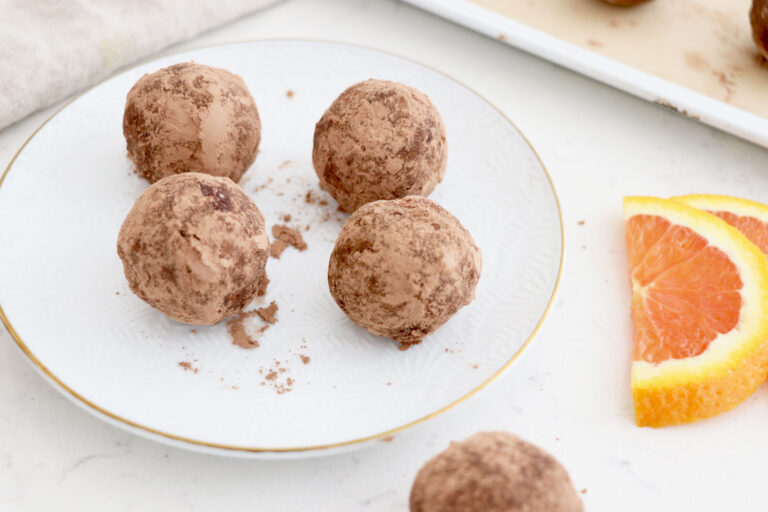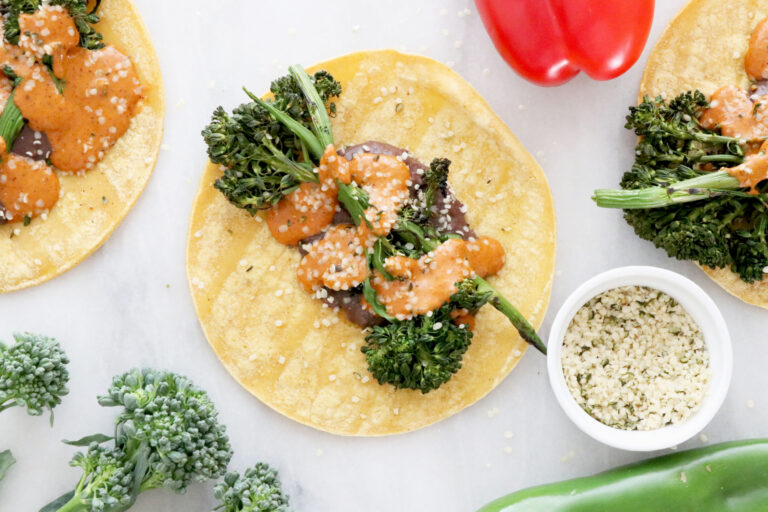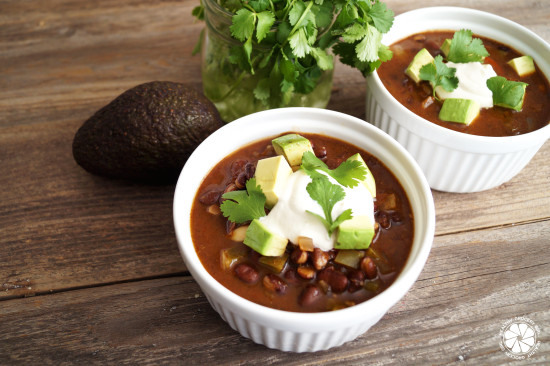GUIDE AND SCHEDULE FOR INTRODUCING BABY’S FIRST FOODS
Hi Friends! Whoa – I can’t believe Ella is getting ready to start eating solids already! Time goes by so fast! As a Registered Dietitian and major foodie this moment is one I have looked forward to and I am so excited about! Starting solids can be a bit overwhelming. Do you start solids at 4 months or 6 months? What foods are okay to start with and what foods should you avoid? Should you start with brown rice cereal or can you jump to a veggie or fruit? Do you need to cook foods or are some foods okay raw (think banana and avocado)? Should you start with pureed meals or introduce Baby Led Weaning?
Food is fun and for the first year that is what meal time should be about! Learning, exploring, tasting and enjoying. Your baby’s primary source of nutrition for the first year should still come from breastmilk or formula.
In my preparation for starting solids with Ella I created a little flow chart (see below) of what foods and what age we’ll introduce them. Of course, this plan is not set in stone… because remember, food is fun! You can introduce foods in the order you would like! But being the organized gal I am, I like to have a plan to start with and then we’ll go from there – no big deal! Below is a list of foods we’ll be introducing to Ella at certain months if you’d like to join in and enjoy the same foods.
If you’d like, please share your little one’s nutrition journey (if you like to share + post online) by tagging @HealthyGroceryGirl and use the hashtag #HGGBaby #HGGMama so I can like your photos and connect with you! It’s also a great way to connect with other HGG Mamas!

WHEN IS BABY READY FOR SOLIDS?
Your baby is ready for solids when he / she:
- Can express when he or she is full. Your baby will turn their head from side to side or push away the breast or bottle. This is important for baby to lead the feedings and self- regulate meal time.
- Has the ability to sit up unassisted and is ready to sit in a high chair!
- Loss of tongue reflux. During a baby’s first 4 months the tongue reflex protects a baby from choking. Between 4 – 6 months the tongue reflux fades, which allows a baby to swallow more easily and not push the food right back out.
- Shows an interest in food. However, this can be controversial because a baby may watch you eat with great interest and even reach for your food starting at 4 months, but this alone does not mean baby is ready for solids
SHOULD I START WITH RICE CEREAL?
Traditionally rice cereal has been offered as babies first food. The main reason for this is that a baby is born with a set iron reserve and by about 6 months this iron reserve diminishes. Rice (or fortified rice) can help boost a babies iron stores. However, many pediatricians are approving avocado, banana or sweet potato as a great first food for baby!
SCHEDULE FOR INTRODUCING SOLID FOODS TO BABY
Introduce a single food at one time that is age appropriate for baby. In general 1 – 3 tablespoons per feeding in appropriate to start. Give baby solid foods after breastmilk or formula so baby is full on their primary source of nutrition before switching to solids. For example, give baby the breast or bottle and then 30 minutes later offer solid foods. While my pediatrician and most pediatricians are supporting the concept that almost any food is considered okay as a baby’s first food these days… go with your gut and introduce foods at a pace that feels right for you and your little one.
The outline below is how I plan to introduce solids to feeding Ella. However, we’ll also let her lead the way so we may speed ahead or go off course and that’s okay. Depending on seasonal availability of produce, our food offering may also change. The following plan is great for introducing purees or Baby Led Weaning. If you’re new to starting solids having an outline, such as the one below, can provide you with kitchen confidence for nourishing your little one. Most importantly, let your little one lead, learn and have fun with food! It’s going to get messy!
4-6 MONTHS
- 1-2 meals per day after nursing / bottle
- 1 -3 tablespoons per meal
- Food is cooked (not including banana or avocado) and pureed with breastmilk or formula. If following Baby Led Weaning food should be cut into “sticks” about the length and width of an adult pinky. The texture should be soft and food should be easy to mash with a finger.
- Wait 3 days between introducing a new food
- Try offering these foods! Avocado, sweet potato, green beans, butternut squash, banana, brown rice, apple, oats.
7-8 MONTHS
- 2-3 meals per day after nursing / bottle
- 2 -4 ounces per meal
- Food is cooked (not including banana or avocado) and pureed or pulsed with breastmilk or formula. See above for tips on size and texture for Baby Led Weaning.
- 3 days between introducing a new food
- Try offering these foods! Peas, pumpkin, chicken, zucchini, carrot, parsnips, turkey, potato
8-9 MONTHS
- 2-3 meals per day after nursing / bottle
- 2-4 ounces per meal
- Food is cooked (not including banana or avocado) and pulsed or mashed to learn chewing.
- Pincher Grasp! At this age you can help your baby develop their “pincher grasp” by offering food cut to the size of a chickpea. The texture of food should be easy to mash with thumb and forefinger. Offering food this way (versus pulsed or mashed) is popular for those following Baby Led Weaning.
- Wait 3 days between introducing a new food
- Try offering these foods! Asparagus, scrambled eggs, quinoa, cauliflower, beans / legumes (gently smooshed with fingers), broccoli, fish.
10-12 MONTHS
- 3 meals per day after nursing / bottle
- 4 – 6 ounces per meal
- Food is cooked (not including banana or avocado) and pureed, pulsed, mashed, chopped or appropriate finger food size.
- Family Meals: This is an excellent time to create one family meal and enjoy them together with food offered in the appropriate size and texture for your little one.
- Wait 3 days between introducing a new food
- Try offering these foods! Any berry, citrus, cucumber, leafy greens, corn, tomato. If you plan to introduce dairy around 12 months is generally a good time.
There are a lot more foods that you may want to introduce to your little one than I have listed above. The foods listed above a starting point to give you some inspiration!
WHEN TO INTRODUCE NEW FOODS
Always follow the 3-day rule. Introduce one new food and continue with the same food for 3 days before introducing a second new food. This will allow you to assess if your baby has an allergic reaction to a certain food and easily be able to know which food is causing an issue.
WHAT NOT TO FEED A BABY UNDER 12 MONTHS
The list below may seem overwhelming, especially if your pediatrician says you can offer your little one anything now! However, it’s worth reading over to help prevent potential choking events and to help nourish your little one.
- Avoid choking hazard foods like peanut butter, nut butters, nuts, seeds, dried fruits (raisins), popcorn, raw carrots, whole grapes or hot dogs. When you do offer grapes (at a later age) peel the skin and cut into quarters.
- Avoid honey which may be a source of Clostridium Botulinum Spores.
- Avoid milk (cow or non-dairy) and stick to breastmilk or formula as the main source of nutrition for the first year.
- Avoid some veggies like beets, spinach, fennel, collard greens and lettuce containing nitrate levels that may be too high for a baby 12 months and younger to process well.
- Avoid some fish high in mercury levels such as mackerel, shark, swordfish and tuna
- Avoid salt. Babies don not need salt in their diet. Your little one’s kidneys are not developed enough to cope with a diet with large amount of salt.
- Egg whites: Eggs are a common food allergen, especially the egg white. As with any common food allergen when you do introduce it, introduce it alone (no other new foods offered within 3 days) so you can assess if your little one has a reaction or not. You may introduce this food before 12 months however just know that it is a common food allergen!
- Chocolate: It’s so yummy but babies do not need the dairy, sugar and caffeine in chocolate. Chocolate candies can also be a choking hazard.
- Raw carrots: Similar to grapes, raw carrots are the 3rd biggest choking hazard. Offer cooked carrots prepared in a way that is appropriate for your little one (pureed, pulsed, mashed etc)
- Hot Dogs: Another choking hazard and well… we all know that hot dogs are not a health food
- Candy: The sugar and processed ingredients are not suitable for a little one
- Wheat: Wheat is a potential food allergen. As with any common food allergen when you do introduce it, introduce it alone (no new foods offered within 3 days) so you can assess if your little one has a reaction or not.
RAW FOODS VS COOKED FOODS
Simply put, many babies do not digest raw foods as well as cooked. Raw fruits and veggies may give your baby diarrhea particularly from a type of fiber known as cellulose. Cooking food helps to break down cellulose, which can help the food become easier to digest. Raw foods also present a choking hazard, whereas cooked foods are soft and easier to consume and swallow. Lastly for food safety, raw foods pose a greater risk of contamination whereas cooking (heat) can destroy most food-borne bacteria.
SINGLE INGREDIENTS + MIXING FOODS
Baby’s first foods should be a single ingredient. Once you have introduced all of the foods one at a time for your baby for that season (for example all the foods you plan to introduce during his / her 6 month), you can start combining foods.
SEASONINGS
Avoid adding salt and sugar to baby food, their little body can not process salt well and excess sugar is not necessary, not to mention holds no nutritional value. With your pediatricians permission, starting at 7 months you can add spices such as cinnamon, garlic powder, black pepper and so on.
Always consult with your Pediatrician before starting solids and giving your child any food.
REMEMBER: CONSULT WITH YOUR PEDIATRICIAN
Again, just in case you missed it! Always consult with your child’s doctor before introducing solids and discuss any foods that may be a potential allergen.
PLANT-BASED, DAIRY, ANIMAL PROTEINS
“It is the position of the American Dietetic Association that appropriately planned vegetarian diets, including total vegetarian or vegan diets, are healthful, nutritionally adequate, and may provide health benefits in the prevention and treatment of certain diseases. Well-planned vegetarian diets are appropriate for individuals during all stages of the life cycle, including pregnancy, lactation, infancy, childhood, and adolescence, and for athletes.”
What you feed your baby is up to you! If you plan to nourish your little one with a vegetarian or vegan diet I highly recommend the plant-based guide to protein, calcium and iron video courses and meal plans we have created available to our Healthy Grocery Girl Premium Members. These courses will help you create a nutritionally balanced diet for your little one that is rich in plant-based calcium, iron and protein. As a member you can also connect with me (did you know I’m a Registered Dietitian Nutritionist?!) for dietary questions for you or your little one. You can learn more and join us at HealthyGroceryGirl.com/JOIN
PUREES vs. BABY LED WEANING
Whether you start with purees or baby lead weaning (either is great!) let baby guide the feedings. Watch your baby and let him / her tell you when he / she has had enough. Don’t make baby “clean her plate” and finish all her food if she is not interested or hungry. It’s also okay if most of the food ends up on the floor or in their hair to start, they are learning and… food is fun!
My personal thoughts on purees vs. Baby Led Weaning…. either option is great! It just comes down to personal preference. For us, we’ll be starting with purees and then moving on to a hybrid of purees and baby led weaning so that Ella can experience various textures. We will let her lead the way with how she enjoys eating! I know, I know… “true” baby led weaning avoids all purees however, I think it’s silly to give your little one such strict food rules right out of the gate. Remember… food is fun!
So whether you choose purees, Baby Led Weaning or a combo of the two – you go mama! You’re nourishing your little one and that is PURE LOVE. You’re doing a great job. Don’t get caught up in the hype of what everyone else may be doing. Listen to your gut and feed your little one what foods + how it feels best you and you babe! Okay stay tuned for more on purees, baby led weaning and recipes upcoming blog posts. You can subscribe to my blog to receive a weekly notification of new blog posts, so you don’t miss out!
RECIPES COMING NEXT!
As I create recipes for Ella I will be sharing them here on the blog! You can subscribe to our blog to receive recipe updates, it’s free and you only receive one email a week notifying you of new blog posts. You can also stay connect with me & Ella’s Eating Fun on Instagram @HealthyGroceryGirl
